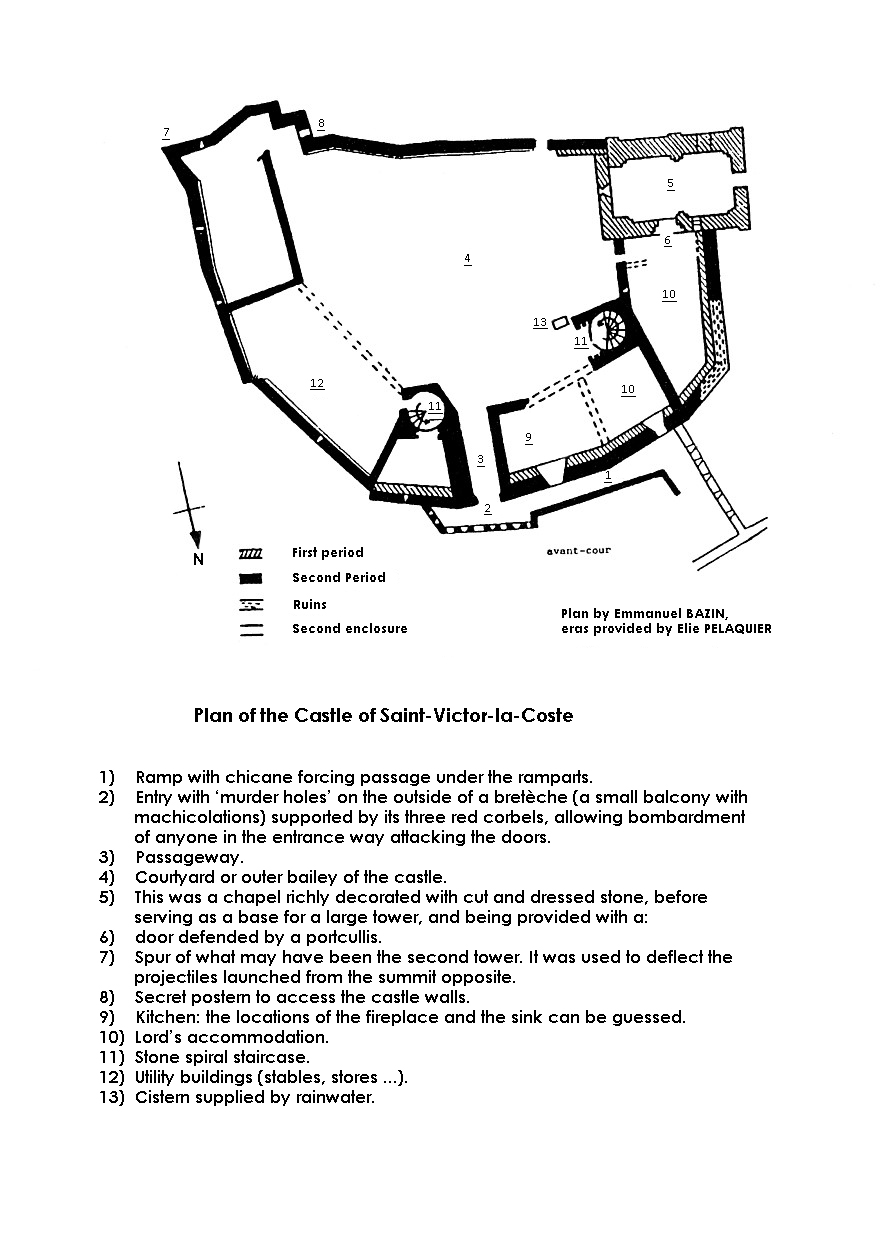Castle at Saint Victor la Coste
Translated from the French, 'Randonee-Decouverte du Patrimoine' (copyright Jean CHARMASSON).
The lords of Sabran had the Castellas built around 1125, to defend the border which separated Languedoc (County of Toulouse) from the Marquisate of Avignon. Their family immediately settled in this fortress, abandoning their eponymous residence which was too far from this nerve centre.

Image copyright Google Maps
Three lines of ramparts, extending from the foot of the slope to the culminating terrace, had to be crossed to reach the castle. Between them were housed the small houses of the villagers. The plan presented here shows the distribution and function of the different rooms comprising the construction: lords’ accommodation, kitchen, stables, cistern, chapel, etc ... It was never taken during the Middle Ages.

In 1249, following the defeat of the Count of Toulouse in the war of the Albigensians, the Sabran, who were his allies, on the order of Louis IX, had to destroy their castle and the walls which defended the approach. Only the chapel was spared.
In the 14th century, undoubtedly to protect against the large groups of mercenaries (called ‘Grandes Compagnies’) whose incursions were ravaging the region, it was hastily re-built on the remaining 12th century foundations. The chapel was raised and made into a keep. A village grew at the foot of the height with its own rampart, reinforced at the corners with round towers. This is the village you go through to ascend to the castle.
After the departure of the Sabran, the Castellas came into the possession of the Montlaurs, the Poitiers (ascendants of Diane de Poitiers) then, in I501, the Nicolaï. Finally, a Florentine banker, Thomas de Gadagne, acquired and restored it.
Taken, looted and set on fire during the wars of religion, it nevertheless remained partly inhabited by a lord's bailiff until the middle of the 17th century. In the 19th century its stones were used to build houses in the current village.